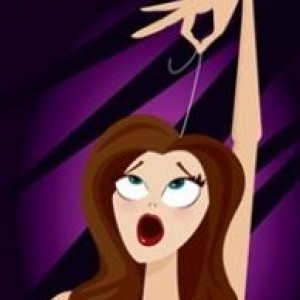
Nail biting, pimple popping, picking a scab, are these things that haunt our teenage years? Or are they something more? We all do repetitive self-grooming behaviors, like pulling out those little grey hairs, but when behaviors like these start to escalate, they can harm our body.(1)
There is a condition called body-focused repetitive behaviors (BFRB) that includes a wide array of behaviors like pulling, picking, biting or scraping of hair, skin or nails. Picking and pulling can occur in sedentary activities (when you are reading or lying in bed) or active times (walking, or putting on make-up). Pulling or picking can be fully planned by having a set time or place to do so. Alternatively, this activity can be done unconsciously, for example realizing only when there isn’t any nail left to chew. BFRB fall in the obsessive-compulsive and related disorders classification. (2)
Emotions can play a huge role in these types of conditions. Individuals with hair pulling, skin picking or nail biting habits are more likely to experience stronger urges to pull or pick when they were bored or frustrated. (3) Another emotional connection has been seen with anxiety and depression. Individuals with BFRB are more likely to show anxiety or depression compared to individuals who do not have BFRB. (4)
Hair pulling specifically is referred to as trichotillomania and affects approximately 1 to 5 % of the population. (5–7) Seventy-five percent of the time, trichotillomania co-occurs with other medical conditions, such as depression. (8) It has been estimated that 20% of doctor visits for trichotillomania are made by children, below the age of 12 years. (8) Impairments in dating, sex and group social events have been recorded outcomes of this condition. (9) Keeping hair pulling a secret is problematic and can have serious health consequences if left untreated. Please stay tuned for a trichotillomania series describing the condition, the dangers, treatment options, and prevalence in children.
Article by: Sarah Versteeg MSc, Mediprobe Research Inc.
- Ahmad Z, Sharma A, Ahmed M, Vatti V. Trichobezoar Causing Gastric Perforation: A Case Report. Iran J Med Sci. 2016 Jan;41(1):67–70.
- Stein DJ, Kogan CS, Atmaca M, Fineberg NA, Fontenelle LF, Grant JE, et al. The classification of Obsessive-Compulsive and Related Disorders in the ICD-11. J Affect Disord. 2016 Jan 15;190:663–74.
- Roberts S, O’Connor K, Aardema F, Bélanger C. The impact of emotions on body-Focused repetitive behaviors: evidence from a non-treatment-seeking sample. J Behav Ther Exp Psychiatry. 2015 Mar;46:189–97.
- Teng, Ellen J, Woods, Douglas W, Marcks, Brrok A, Twohig, Michael P. Body-Focused Repetitive Behaviors: The Proximal and Distal Effects of Affective Variables on Behavioral Expression. J Psychopathol Behav Assess. 2004 Mar;26(1):55–64.
- Christenson GA, Pyle RL, Mitchell JE. Estimated lifetime prevalence of trichotillomania in college students. J Clin Psychiatry. 1991 Oct;52(10):415–7.
- Grant JE, Levine L, Kim D, Potenza MN. Impulse control disorders in adult psychiatric inpatients. Am J Psychiatry. 2005 Nov;162(11):2184–8.
- American Psychiatric Association. Diagnostic and Statistical Manual of Mental Disorders. 5th Edition. Arlington, VA: American Psychiatric Publishing; 2013.
- Gupta MA, Gupta AK, Knapp K. Trichotillomania: Demographic and Clinical Features From a Nationally Representative US Sample. SkinMed. 2015;13(6):455–60.
- Diefenbach GJ, Tolin DF, Hannan S, Crocetto J, Worhunsky P. Trichotillomania: impact on psychosocial functioning and quality of life. Behav Res Ther. 2005 Jul;43(7):869–84.












